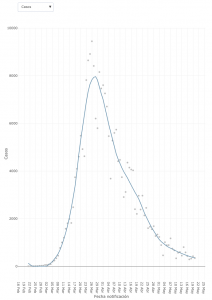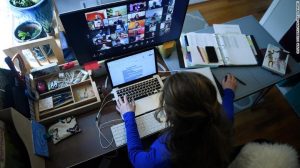
The town I live in outside of Barcelona has now entered into phase 2 of Spain’s plan to bring people and the economy back after the emergency lockdown that was imposed last March 14th. Restaurants and coffee shops are open with limited capacity and life seem to be getting back to normal.
According to the official data, the number of new daily cases is now down in the low hundreds, and health services can now begin to use testing, contact tracing and other measures to control SARS-CoV-2 without doing further harm to the economy. The challenge for Spain will be to open the hotels, beaches, and borders and transmit enough confidence that the tourist season is not a total write off.
From a business perspective, there are three separate ideas that, in my view, every business leader needs to put into practice.
The first is to develop contingency plans for exactly when restrictions will be lifted and what kind of operational results will be possible in the next 3-6 months. In the hotel business, for example, what will be the expected occupation levels in July, August, and Septemeber? Similar calculations should be made in virtually every business and my advice is to have several such contingencies in place. Will people flock to car dealers, appliance stores, and finally, make purchases that they have put off for the last few months or will caution rule the day. Nobody really knows and the best way forward is to manage the uncertainty.
There may, for example, be a second wave of viral infections sometime in the fall and it makes sense to have plans in place for such an eventuality with a pre-established crisis management committee on standby if it does.

The second idea is to look at the operational solutions and patches that have been put into place during the emergency and think though to what degree such changes are potentially beneficial for the organization and its people. Most companies have, for example, found that people can be productive when working from home and that many activities could be done virtually rather than face to face. mangers should, therefore, try to think through if some of those changes should be made permanent or maybe something in between set up. A concrete idea that one executive told me is that we’re looking at only requiring people to be in the office two days per week.
The third idea that I think business leaders should start working on is looking beyond the crisis and thinking though alternative scenarios for what the world will look like and what the “new normal” will be. Questions I have been talking about with business leaders and colleagues about have to do with issues like the medium-term impact on world trade, consumer behavior, the retail sector, and our overall attitude towards environmental sustainability and climate change.
Will the crisis accelerate the trends concerning automation, digitalization, and the future of work? Will people have had such a positive experience shopping online that they stop going to malls and shopping centers? None of these questions are clear at this moment and these have huge implications for the medium and long term future of many companies.
What I believe to be the most important part of these last two reflections is that they are related. Some of the behaviors and workarounds that we have all figured out will be highly relevant only in certain scenarios of the new normal. My last piece of advice is to, therefore, think through not only which behaviors ought to be re-enforced as we all come out of this thing but also to think about who applicable they may be in the medium term.


